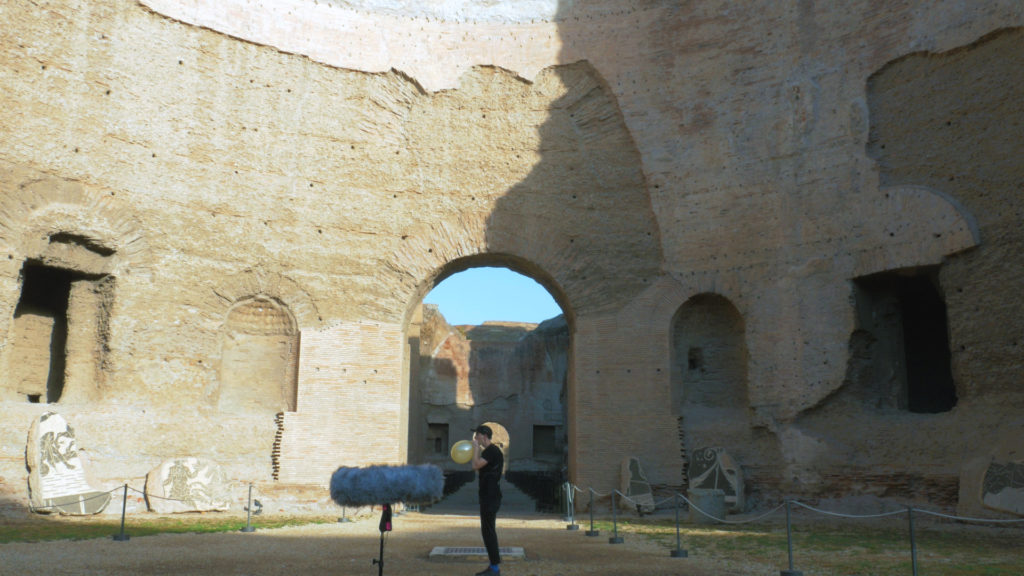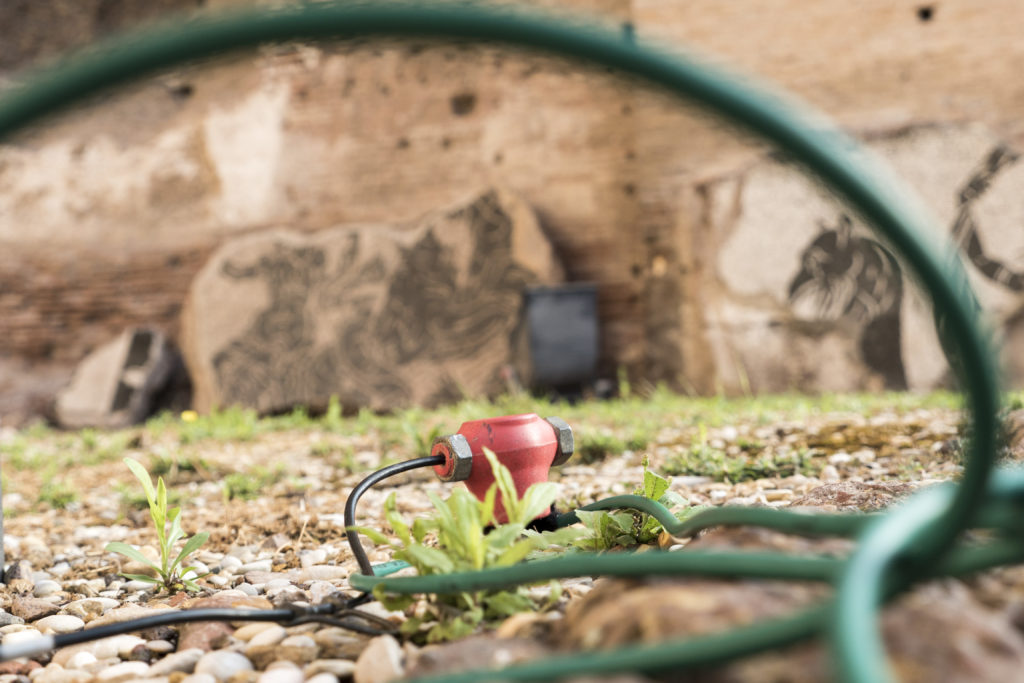Specification
Stereo sound, bodypack transducer and HD video (06min 57sec)
Palimpsest
How might a sonospheric investigation evoke urban memory? What form might that memory take, inscribed, embedded and pulsing within the material flows of the geological strata of the Roman Forum, Palatine Hill and Baths of Caracalla?

Lisbeth Lipari traces the relationships between bodies and machines, arguing that we can trace the embodied materiality of communication through the fifteenth century creation of the Gutenberg press and the palimpsestuous Sumerian scripts of 3,000BCE. Let us consider the footprints of messengers transporting scrolls across the Roman Empire’s circus publicus the first publicly owned postal service whose average rate to transport a message was fifty Roman miles per day, or to think about the architectures that provided platforms for communication, be it the speakers platform of the Rostra in the Roman Forum or the caldarium within the Baths of Caracalla, a venue for daily relaxation, gossip and bartering for 8,000 Romans. And what of the haunting absences vibrating through nonhuman material interactions? Can we listen closely to the inexplicable rattling of the sacred spears believed by Romans to be a warning of war, but ignored by Caesar on the night before his assassination?

Palimpsest originally refers to an ancient document – often parchment – that has been written on, erased, rewritten over time. Expanding upon this notion one can consider through the palimpsest how invented and imposed social relations that are otherwise hidden, remain beneath the surface of the cultural text or how the built environment may be seen as a form of palimpsest. Prior to the revival of Rome and its birth as a tourist destination by the coming of age Grand Tours from the 17th Century onwards, many buildings in Rome were not viewed as precious and were constantly built on top of, inside of, or stripped apart for the construction of new buildings – particularly for new Catholic/Papal Basilicas. During the dark ages, the Roman Forum, previous centre of the Roman Kingdom, Republic and Empires, became a grazing space and thoroughfare for the wider city, and the monumental Baths of Caracalla, Rome’s second largest bath house, had become a storage quarry for bricks and marble. However, the layered remnants of history, social practices, and cultural memory became embedded into the tufa blocks, marble detailing and relief sculptures of these now iconic spaces. Historian John Elsner has described Rome as the embodiment of the complex cultural palimpsest into which Europeans have been born and asserts that while in most of Europe the palimpsest of our past can only be felt, in Rome it can be seen but also that the phenomena of the architectural palimpsest has many reverberations (Elsner 1994, 18).
Exhibitions
Residency Showcase, The British School at Rome, Rome, IT (2017)